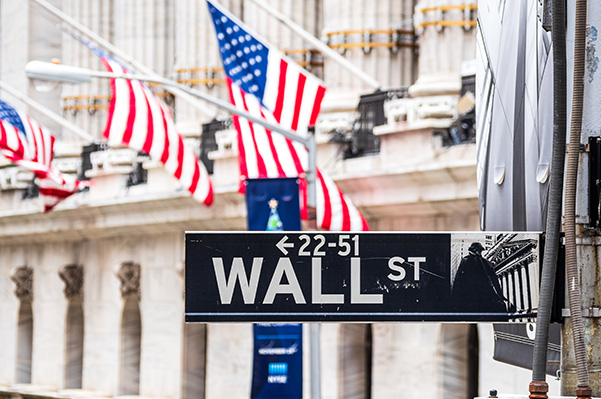
Are You Ready to File Your 2021 Federal Tax Return?
Posted on April 07, 2022
Planning and Guidance, Tailored To Your Life and Goals
News
Posted on July 14, 2020

More fiscal stimulus, but monetary policy is running out of steam Investors have been edified by unprecedented policy stimulus: The Federal Reserve has dampened corporate insolvencies, and the majority of unemployed workers are getting +100% wage replacement via enhanced benefits. Today, as quarantines get lifted, all 50 US states have entered some phase of economic reopening. Yet, Federal Reserve Chair Jerome Powell is right about the “extraordinarily uncertain” outlook. That’s because we are still learning about COVID-19—it’s pathology, health effects, how consumers, businesses, and governments will/should react. The Coronavirus pandemic and accompanying economic shutdowns have undoubtedly caused a deep recession. Per the IMF, U.S. GDP will fall 8% and global GDP 5% in 2020. U.S. industrial production is 16% below its high,1 and the unemployment rate stands at 13.3% or 16.4% (depending on how furloughed workers are counted). The situation would clearly be worse were it not for extraordinary fiscal and monetary stimulus. The U.S. has increased federal spending by $2.9 trillion since the pandemic began, and we expect another $1 to $1.5 trillion package before the end of the summer. Governments around the world have also been pumping money into their economies. At the same time, the Federal Reserve and other central banks have slashed policy rates to zero or below and allowed real rates to collapse. Forward guidance suggests rates will remain zero-bound through at least the end of 2022. Monetary policy, however, has already become as accommodative as it can. Central banks are continuing to ease, but that easing is no longer accelerating. Stocks from here: a cautious outlook The biggest shock of the last few months is how quickly stocks came roaring back. The S&P 500 Index is less than 10% below its February all-time high. And at this point, we see several reasons for caution. The first is valuation: The 12-month forward P/E ratio for the S&P 500 has climbed from a low of 13.4X on March 23 to 21.4X now, as investors began pricing in prospects for economic recovery. Such an acceleration is probably setting investors up for possible disappointments over economic and earnings results. We are also concerned about political risks, which will likely heat up over the coming months. There is a growing possibility of a Democratic sweep in November, which could result in tax increases and a tougher regulatory environment. We are also concerned about the deteriorating U.S./China relationship and trade disputes with Europe. These risks were easy to overlook when investors were focused on easing monetary policy, but we expect they will come back into focus. Additionally, the future path of the Coronavirus itself remains a wildcard. Infection levels are rising in many countries and in the U.S. Sunbelt. And this wave is likely to continue as economies continue to re-open. Investors are likely to continue to be rattled by news of new spikes and a slowdown or reversal of reopening policies. Yet, while these re-closures are happening, ordinary Americans are showing a desire to press for more freedom. On May 31, 352,947 people went through TSA airport security checks. On June 22, as reports of a surge in new cases started to appear, TSA counted 607,540 passengers. If these reports of a surge are slowing activity, we can’t see it in the TSA data. On July 5, 732,123 passengers entered airports. Moreover, gasoline usage, which had been down about 50% from the year before at its worst back in April, is now down just 10%. And Apple mobility data, which reflects requests for directions, bottomed in April, down nearly 60% from the January 13, 2020 benchmark. Since April, the mobility data has rebounded 19%. At this point, we think stocks as a whole appear fully valued. Over the next few months, we expect stocks to be trendless and volatile. A correction is possible, but we do not expect it would morph into a renewed bear market because the underlying economy remains sound. We expect stocks to continue trading at a level between 2,750 and 3,150 for the S&P 500 for the time being. Additional clarity on the political front, news of effective treatment for the virus, and a more coherent and consistent public health policy would all help stocks to break out of this range to the upside, which could happen later this year or in early 2021. Selectivity will remain critical On an inflation-adjusted basis, the 10-year cumulative average annual return for stocks is 12.4%, which is quite high relative to a longer history and is almost certainly unsustainable. Over the long-term, we think secular factors such as a rise in populism and protectionism around the world, the likelihood of higher tax rates in the U.S., rising debt and deficit levels, an eventual uptick in inflation and higher equity valuations will all conspire to keep stock returns relatively low. These same factors are also going to hurt returns on other asset classes, chiefly areas of the bond market. Since the early 1980s, long-term inflation has been falling, providing a secular tailwind for the bond market. But inflation now appears to be bottoming, which spells trouble for fixed income markets. We expect stocks will outperform bonds over the coming years, but that will provide little solace for equity investors if their returns are limited as well. Fueling the Rally Oil prices have continued to rebound from lows reached in late April, trending near $40 per barrel, yet still below pre-crisis levels. Amid the virus-related shutdowns, global demand for oil was down nearly 30% year-over-year as economic activity worldwide was brought to a halt. At the same time, tensions flared between Russia and OPEC regarding market share, resulting in increased supply and further downward pressure on prices. As stay-at-home restrictions have eased across the globe and supply remains constrained, oil prices have rebounded. However, if a second wave of the Coronavirus ends the rally in oil prices, hopes for a quick recovery in the energy sector could be dashed as we are already seeing rising bankruptcies and energy-exporting economies facing severe fiscal pressures. The Buck Stops Here? The U.S. dollar, a traditional safe-haven currency, has been volatile as it weighs evidence of improving global economic data against a resurgence in Coronavirus infections. Over the past quarter, the U.S. Dollar Index (DXY Index) has fallen by almost 3% amid the global risk-on environment sparked by economic reopening’s across the globe. However, there is no shortage of risks that could cause the USD’s recent downtrend to reverse course. Evidence of a second wave of the Coronavirus, uncertainty surrounding the upcoming U.S. presidential election, and resurfacing tensions with China could send investors flocking back to the USD. But for now, a weaker dollar could be a respite for emerging market economies and their currencies as they struggle with the impacts of the global pandemic. There is also early evidence that children may not be a major vector for transmission, which may make it easier for schools to reopen, taking pressure off working parents. Some health care analysts think therapies might be available this summer. But a vaccine could push into 2021 and herd immunity into 2022. Recent reports show the virus accelerating in early reopening states, with the total number of expected US deaths by early August ramping higher. What might this mean for the economy? If the virus is not beaten and headlines about deteriorating conditions continue, personal safety concerns could cap consumer spending persistently below pre-pandemic levels, despite reopened businesses. This is important because it suggests interconnectedness between: